Paolo Bellavista
Federated Unlearning Made Practical: Seamless Integration via Negated Pseudo-Gradients
Apr 08, 2025



Abstract:The right to be forgotten is a fundamental principle of privacy-preserving regulations and extends to Machine Learning (ML) paradigms such as Federated Learning (FL). While FL enhances privacy by enabling collaborative model training without sharing private data, trained models still retain the influence of training data. Federated Unlearning (FU) methods recently proposed often rely on impractical assumptions for real-world FL deployments, such as storing client update histories or requiring access to a publicly available dataset. To address these constraints, this paper introduces a novel method that leverages negated Pseudo-gradients Updates for Federated Unlearning (PUF). Our approach only uses standard client model updates, anyway employed during regular FL rounds, and interprets them as pseudo-gradients. When a client needs to be forgotten, we apply the negated of their pseudo-gradients, appropriately scaled, to the global model. Unlike state-of-the-art mechanisms, PUF seamlessly integrates with FL workflows, incurs no additional computational and communication overhead beyond standard FL rounds, and supports concurrent unlearning requests. We extensively evaluated the proposed method on two well-known benchmark image classification datasets (CIFAR-10 and CIFAR-100) and a real-world medical imaging dataset for segmentation (ProstateMRI), using three different neural architectures: two residual networks and a vision transformer. The experimental results across various settings demonstrate that PUF achieves state-of-the-art forgetting effectiveness and recovery time, without relying on any additional assumptions, thus underscoring its practical applicability.
SparsyFed: Sparse Adaptive Federated Training
Apr 07, 2025Abstract:Sparse training is often adopted in cross-device federated learning (FL) environments where constrained devices collaboratively train a machine learning model on private data by exchanging pseudo-gradients across heterogeneous networks. Although sparse training methods can reduce communication overhead and computational burden in FL, they are often not used in practice for the following key reasons: (1) data heterogeneity makes it harder for clients to reach consensus on sparse models compared to dense ones, requiring longer training; (2) methods for obtaining sparse masks lack adaptivity to accommodate very heterogeneous data distributions, crucial in cross-device FL; and (3) additional hyperparameters are required, which are notably challenging to tune in FL. This paper presents SparsyFed, a practical federated sparse training method that critically addresses the problems above. Previous works have only solved one or two of these challenges at the expense of introducing new trade-offs, such as clients' consensus on masks versus sparsity pattern adaptivity. We show that SparsyFed simultaneously (1) can produce 95% sparse models, with negligible degradation in accuracy, while only needing a single hyperparameter, (2) achieves a per-round weight regrowth 200 times smaller than previous methods, and (3) allows the sparse masks to adapt to highly heterogeneous data distributions and outperform all baselines under such conditions.
AI-Driven Intrusion Detection Systems (IDS) on the ROAD dataset: A Comparative Analysis for automotive Controller Area Network (CAN)
Aug 30, 2024



Abstract:The integration of digital devices in modern vehicles has revolutionized automotive technology, enhancing safety and the overall driving experience. The Controller Area Network (CAN) bus is a central system for managing in-vehicle communication between the electronic control units (ECUs). However, the CAN protocol poses security challenges due to inherent vulnerabilities, lacking encryption and authentication, which, combined with an expanding attack surface, necessitates robust security measures. In response to this challenge, numerous Intrusion Detection Systems (IDS) have been developed and deployed. Nonetheless, an open, comprehensive, and realistic dataset to test the effectiveness of such IDSs remains absent in the existing literature. This paper addresses this gap by considering the latest ROAD dataset, containing stealthy and sophisticated injections. The methodology involves dataset labelling and the implementation of both state-of-the-art deep learning models and traditional machine learning models to show the discrepancy in performance between the datasets most commonly used in the literature and the ROAD dataset, a more realistic alternative.
FedQUIT: On-Device Federated Unlearning via a Quasi-Competent Virtual Teacher
Aug 14, 2024Abstract:Federated Learning (FL) promises better privacy guarantees for individuals' data when machine learning models are collaboratively trained. When an FL participant exercises its right to be forgotten, i.e., to detach from the FL framework it has participated and to remove its past contributions to the global model, the FL solution should perform all the necessary steps to make it possible without sacrificing the overall performance of the global model, which is not supported in state-of-the-art related solutions nowadays. In this paper, we propose FedQUIT, a novel algorithm that uses knowledge distillation to scrub the contribution of the forgetting data from an FL global model while preserving its generalization ability. FedQUIT directly works on clients' devices and does not require sharing additional information if compared with a regular FL process, nor does it assume the availability of publicly available proxy data. Our solution is efficient, effective, and applicable in both centralized and federated settings. Our experimental results show that, on average, FedQUIT requires less than 2.5% additional communication rounds to recover generalization performances after unlearning, obtaining a sanitized global model whose predictions are comparable to those of a global model that has never seen the data to be forgotten.
Probabilistic On-Demand Charging Scheduling for ISAC-Assisted WRSNs with Multiple Mobile Charging Vehicles
Feb 16, 2024Abstract:The internet of things (IoT) based wireless sensor networks (WSNs) face an energy shortage challenge that could be overcome by the novel wireless power transfer (WPT) technology. The combination of WSNs and WPT is known as wireless rechargeable sensor networks (WRSNs), with the charging efficiency and charging scheduling being the primary concerns. Therefore, this paper proposes a probabilistic on-demand charging scheduling for integrated sensing and communication (ISAC)-assisted WRSNs with multiple mobile charging vehicles (MCVs) that addresses three parts. First, it considers the four attributes with their probability distributions to balance the charging load on each MCV. The distributions are residual energy of charging node, distance from MCV to charging node, degree of charging node, and charging node betweenness centrality. Second, it considers the efficient charging factor strategy to partially charge network nodes. Finally, it employs the ISAC concept to efficiently utilize the wireless resources to reduce the traveling cost of each MCV and to avoid the charging conflicts between them. The simulation results show that the proposed protocol outperforms cutting-edge protocols in terms of energy usage efficiency, charging delay, survival rate, and travel distance.
Federated Unlearning: A Survey on Methods, Design Guidelines, and Evaluation Metrics
Jan 10, 2024Abstract:Federated Learning (FL) enables collaborative training of a Machine Learning (ML) model across multiple parties, facilitating the preservation of users' and institutions' privacy by keeping data stored locally. Instead of centralizing raw data, FL exchanges locally refined model parameters to build a global model incrementally. While FL is more compliant with emerging regulations such as the European General Data Protection Regulation (GDPR), ensuring the right to be forgotten in this context - allowing FL participants to remove their data contributions from the learned model - remains unclear. In addition, it is recognized that malicious clients may inject backdoors into the global model through updates, e.g. to generate mispredictions on specially crafted data examples. Consequently, there is the need for mechanisms that can guarantee individuals the possibility to remove their data and erase malicious contributions even after aggregation, without compromising the already acquired "good" knowledge. This highlights the necessity for novel Federated Unlearning (FU) algorithms, which can efficiently remove specific clients' contributions without full model retraining. This survey provides background concepts, empirical evidence, and practical guidelines to design/implement efficient FU schemes. Our study includes a detailed analysis of the metrics for evaluating unlearning in FL and presents an in-depth literature review categorizing state-of-the-art FU contributions under a novel taxonomy. Finally, we outline the most relevant and still open technical challenges, by identifying the most promising research directions in the field.
Knowledge Distillation for Federated Learning: a Practical Guide
Nov 09, 2022Abstract:Federated Learning (FL) enables the training of Deep Learning models without centrally collecting possibly sensitive raw data. This paves the way for stronger privacy guarantees when building predictive models. The most used algorithms for FL are parameter-averaging based schemes (e.g., Federated Averaging) that, however, have well known limits: (i) Clients must implement the same model architecture; (ii) Transmitting model weights and model updates implies high communication cost, which scales up with the number of model parameters; (iii) In presence of non-IID data distributions, parameter-averaging aggregation schemes perform poorly due to client model drifts. Federated adaptations of regular Knowledge Distillation (KD) can solve and/or mitigate the weaknesses of parameter-averaging FL algorithms while possibly introducing other trade-offs. In this article, we provide a review of KD-based algorithms tailored for specific FL issues.
AI and 6G into the Metaverse: Fundamentals, Challenges and Future Research Trends
Aug 23, 2022



Abstract:Since Facebook was renamed Meta, a lot of attention, debate, and exploration have intensified about what the Metaverse is, how it works, and the possible ways to exploit it. It is anticipated that Metaverse will be a continuum of rapidly emerging technologies, usecases, capabilities, and experiences that will make it up for the next evolution of the Internet. Several researchers have already surveyed the literature on artificial intelligence (AI) and wireless communications in realizing the Metaverse. However, due to the rapid emergence of technologies, there is a need for a comprehensive and in-depth review of the role of AI, 6G, and the nexus of both in realizing the immersive experiences of Metaverse. Therefore, in this survey, we first introduce the background and ongoing progress in augmented reality (AR), virtual reality (VR), mixed reality (MR) and spatial computing, followed by the technical aspects of AI and 6G. Then, we survey the role of AI in the Metaverse by reviewing the state-of-the-art in deep learning, computer vision, and edge AI. Next, we investigate the promising services of B5G/6G towards Metaverse, followed by identifying the role of AI in 6G networks and 6G networks for AI in support of Metaverse applications. Finally, we enlist the existing and potential applications, usecases, and projects to highlight the importance of progress in the Metaverse. Moreover, in order to provide potential research directions to researchers, we enlist the challenges, research gaps, and lessons learned identified from the literature review of the aforementioned technologies.
Industry 5.0 is Coming: A Survey on Intelligent NextG Wireless Networks as Technological Enablers
May 18, 2022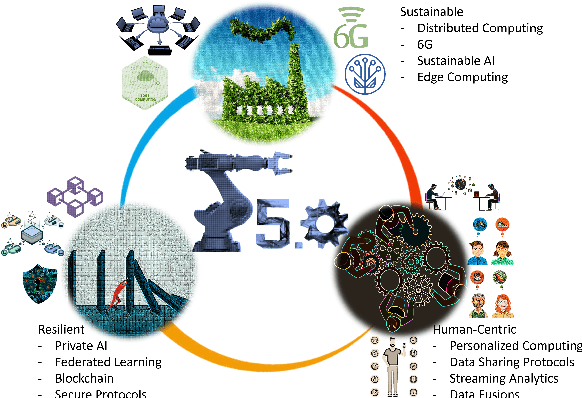
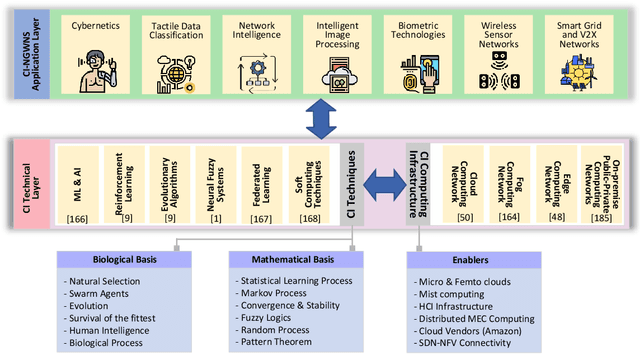
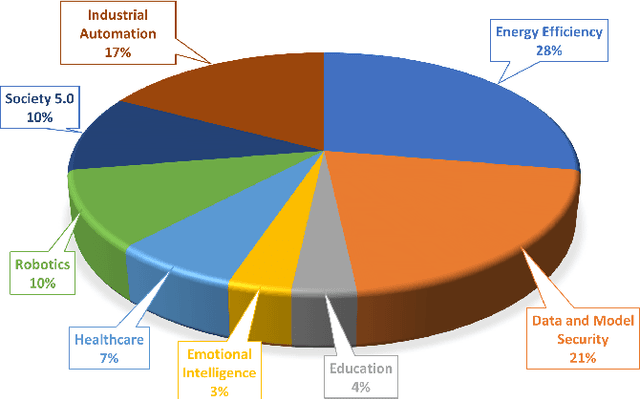
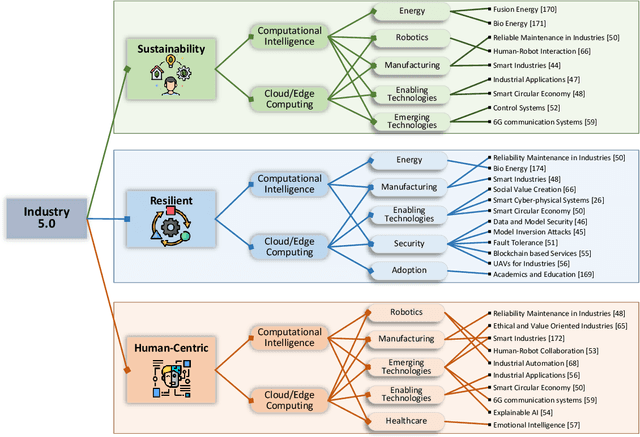
Abstract:Industry 5.0 vision, a step toward the next industrial revolution and enhancement to Industry 4.0, envisioned the new goals of resilient, sustainable, and human-centric approaches in diverse emerging applications, e.g., factories-of-the-future, digital society. The vision seeks to leverage human intelligence and creativity in nexus with intelligent, efficient, and reliable cognitive collaborating robots (cobots) to achieve zero waste, zerodefect, and mass customization-based manufacturing solutions. However, the vision requires the merging of cyber-physical worlds through utilizing Industry 5.0 technological enablers, e.g., cognitive cobots, person-centric artificial intelligence (AI), cyberphysical systems, digital twins, hyperconverged data storage and computing, communication infrastructure, and others. In this regard, the convergence of the emerging computational intelligence (CI) paradigm and next-generation wireless networks (NGWNs) can fulfill the stringent communication and computation requirements of the technological enablers in the Industry 5.0 vision, which is the aim of this survey-based tutorial. In this article, we address this issue by reviewing and analyzing current emerging concepts and technologies, e.g., CI tools and frameworks, network-in-box architecture, open radio access networks, softwarized service architectures, potential enabling services, and others, essential for designing the objectives of CINGWNs to fulfill the Industry 5.0 vision requirements. Finally, we provide a list of lessons learned from our detailed review, research challenges, and open issues that should be addressed in CI-NGWNs to realize Industry 5.0.
IIFNet: A Fusion based Intelligent Service for Noisy Preamble Detection in 6G
Apr 22, 2022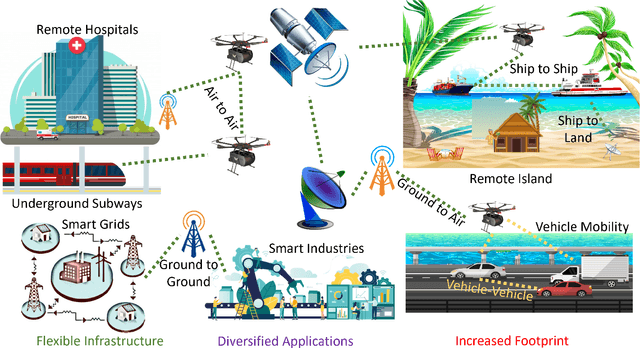
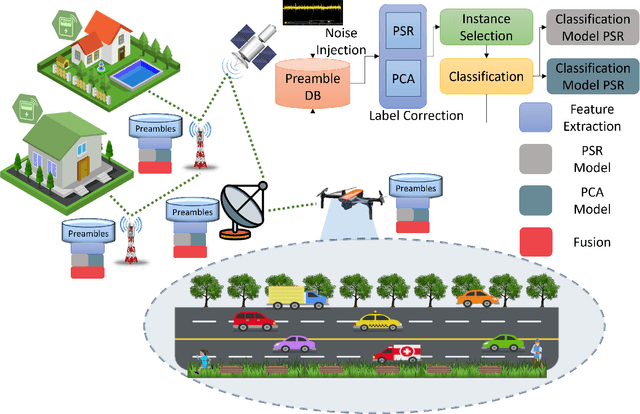

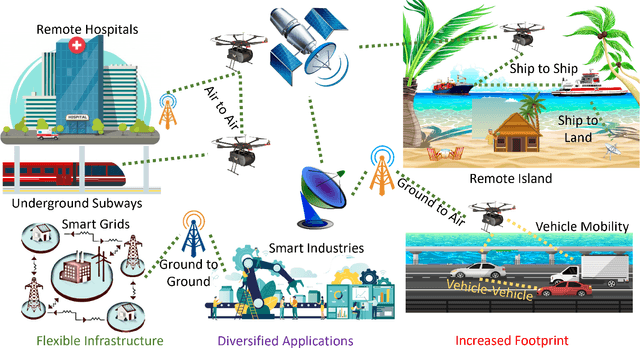
Abstract:In this article, we present our vision of preamble detection in a physical random access channel for next-generation (Next-G) networks using machine learning techniques. Preamble detection is performed to maintain communication and synchronization between devices of the Internet of Everything (IoE) and next-generation nodes. Considering the scalability and traffic density, Next-G networks have to deal with preambles corrupted by noise due to channel characteristics or environmental constraints. We show that when injecting 15% random noise, the detection performance degrades to 48%. We propose an informative instance-based fusion network (IIFNet) to cope with random noise and to improve detection performance, simultaneously. A novel sampling strategy for selecting informative instances from feature spaces has also been explored to improve detection performance. The proposed IIFNet is tested on a real dataset for preamble detection that was collected with the help of a reputable commercial company.
* 7 pages, 3 figures, 2 tables, Accepted Article
 Add to Chrome
Add to Chrome Add to Firefox
Add to Firefox Add to Edge
Add to Edge